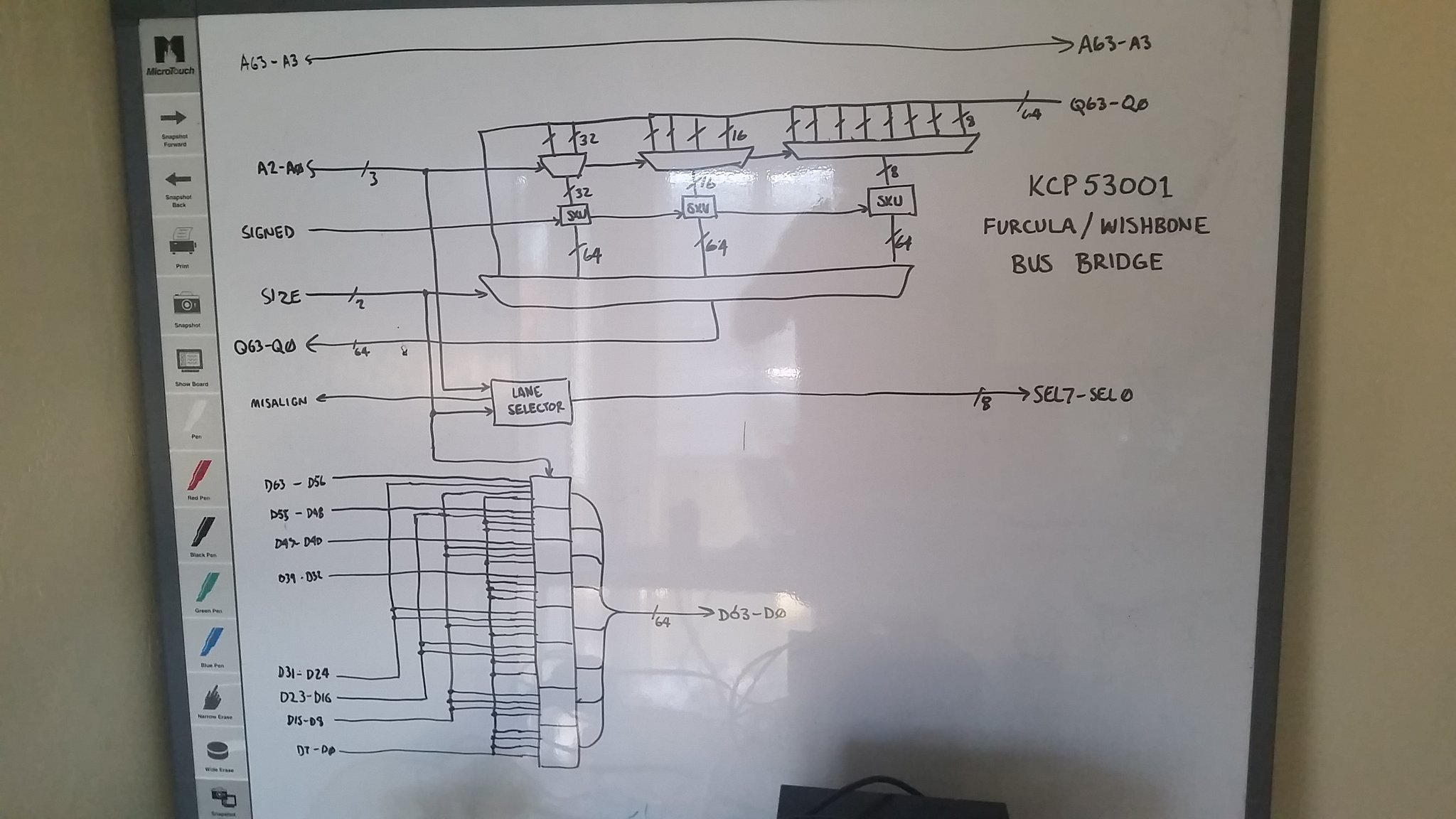I'm happy to report that, inside of a Verilog simulation, the KCP53000 has run its very first program. Kind of.
I'm being somewhat unfair though; see, the circuit consists of the CPU coupled to a simple ROM which is direct-wired onto the I-port of the processor, while the D-port is hard-wired to the value $41. So, when this program attempts to print its "Hello world" message, all it prints out is a bunch of "A"s. So, in that respect, the processor is doing exactly what it should be doing.
What's missing is a Wishbone bus bridge which I can use to couple the D-port to the same ROM image. Additionally, I'll be needing a Furcula bus arbiter to funnel both I- and D-ports into the same Wishbone interconnect. Once I have that, I can then perform address decode and mapping of ROM and RAM, and both should be equally accessible for instruction or data access.
I've worked up a conceptual model of the Wishbone bus bridge.
 As you can see, it is largely an arrangement of multiplexors and zero/sign-extension units. The most complex part of the unit is going to be the byte lane generator, which is really a 32-minterm piece of logic that generates Wishbone's SEL_O signals as well as an error indicator back to the CPU, MISALIGNED (which I'll ignore for now, since CPU doesn't yet have such an input).
As you can see, it is largely an arrangement of multiplexors and zero/sign-extension units. The most complex part of the unit is going to be the byte lane generator, which is really a 32-minterm piece of logic that generates Wishbone's SEL_O signals as well as an error indicator back to the CPU, MISALIGNED (which I'll ignore for now, since CPU doesn't yet have such an input).
I haven't quite figured out how to implement the bus arbiter just yet. Since I know that the KCP53000 cannot yet overlap its bus cycles, I might just logically-OR all the buses together and go with that for now. However, when I implement fetch/execute pipelining later on, that approach will fail spectacularly. However, with the SVFIG Forth Day and 5th RISC-V Workshop just around the corner, this stop-gap just might be worth the do-over later on.
 Samuel A. Falvo II
Samuel A. Falvo II
Discussions
Become a Hackaday.io Member
Create an account to leave a comment. Already have an account? Log In.